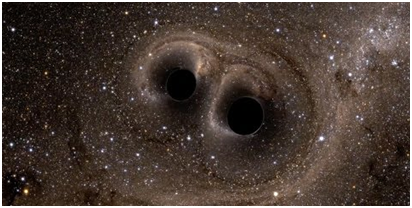PREVIOUS
Merger of two Black holes
May 3 , 2020
1670 days
933
0
- For the first time the scientists of Laser Interferometer Gravitational Wave Laboratory (LIGO) have recently recorded the first merger of black holes that were of unequal mass black holes.
- The event has been named as GW190412.
- This observation once again confirms Einstein’s theory of general relativity.
- That theory predicts the existence of higher harmonics, i.e. gravitational waves at two or three times the fundamental frequency.
- One was some 30 times the mass of the Sun and the other had a mass nearly 8 times the solar mass.
- Solar Mass is the standard of mass in astronomy that is used to indicate masses of other masses.
- One solar mass is equal to 2×1030 Kg.
- This is almost five years after the first ever detection of gravitational wave signals by these powerful detectors.
- The actual merger took place at a distance of 2.5 billion light years away.

About LIGO
- The Laser Interferometer Gravitational-Wave Observatory (LIGO) is a large-scale physics experiment and observatory.
- It works to detect cosmic gravitational waves and to develop gravitational-wave observations as an astronomical tool.
- Two large observatories were built in the United States with the aim of detecting gravitational waves by laser interferometry.
- A black hole is an object in space that is so dense and has such strong gravity that no matter or light can escape its pull.
- Because no light can escape, it is black and invisible.
Leave a Reply
Your Comment is awaiting moderation.


